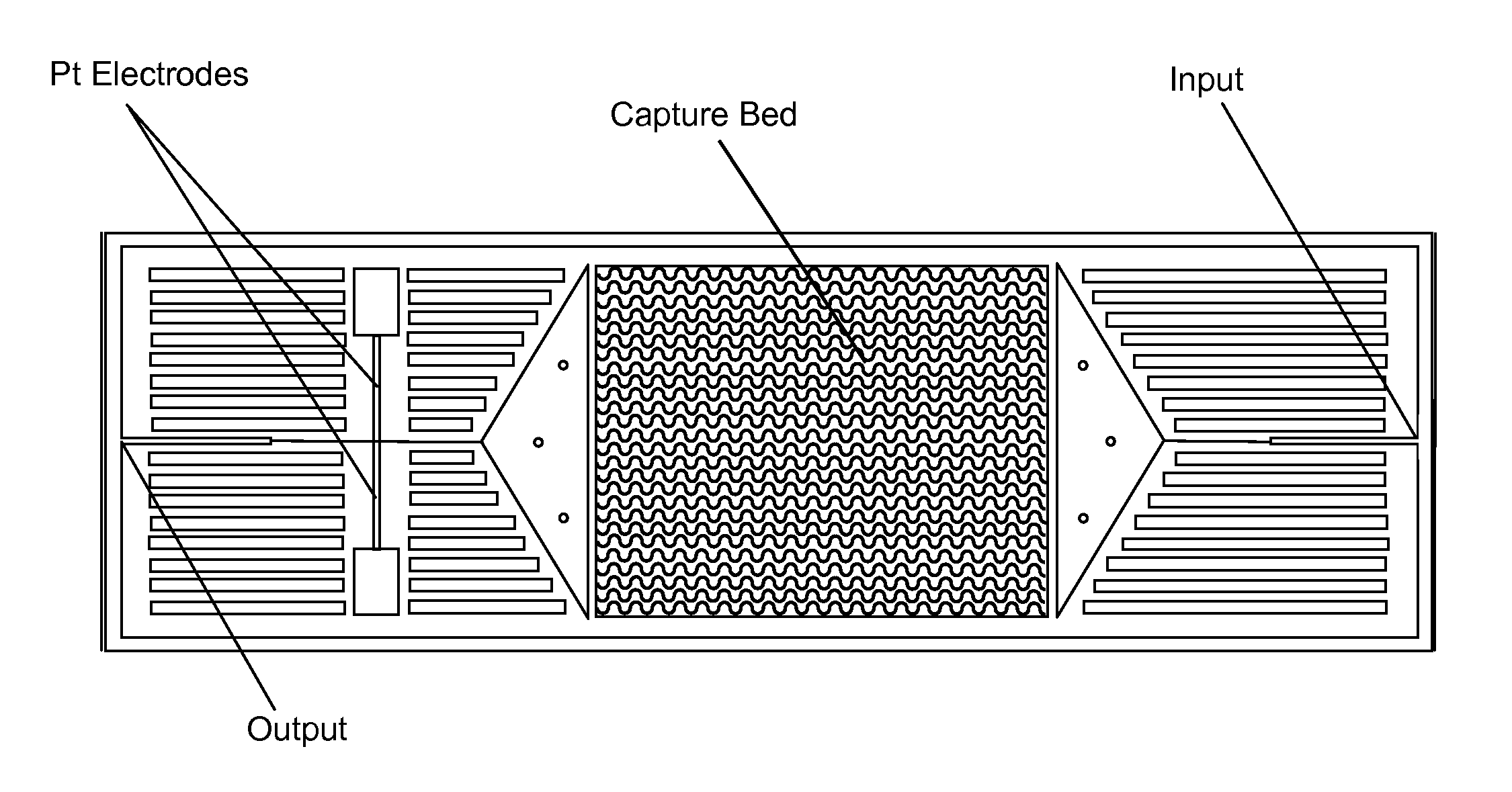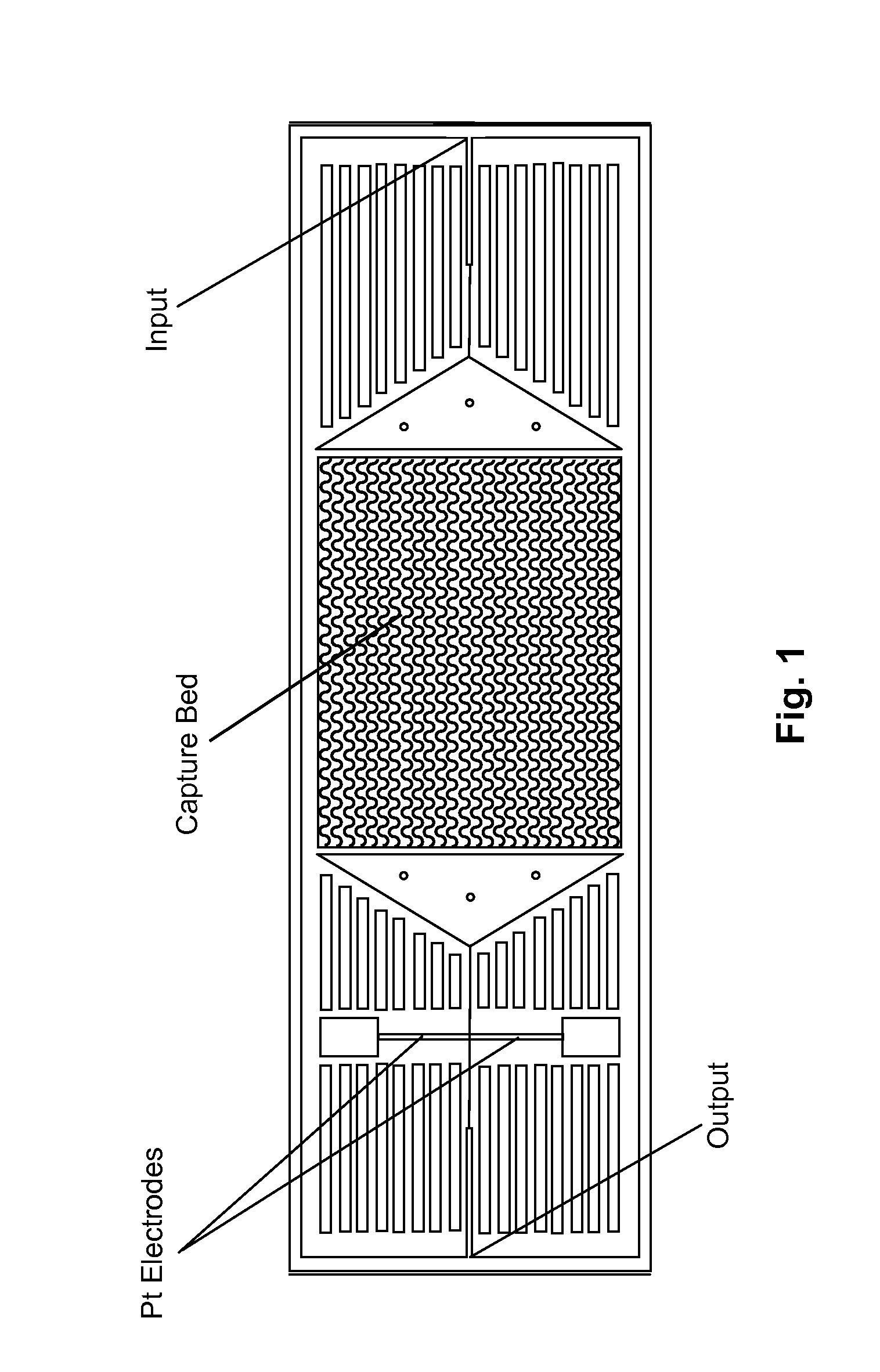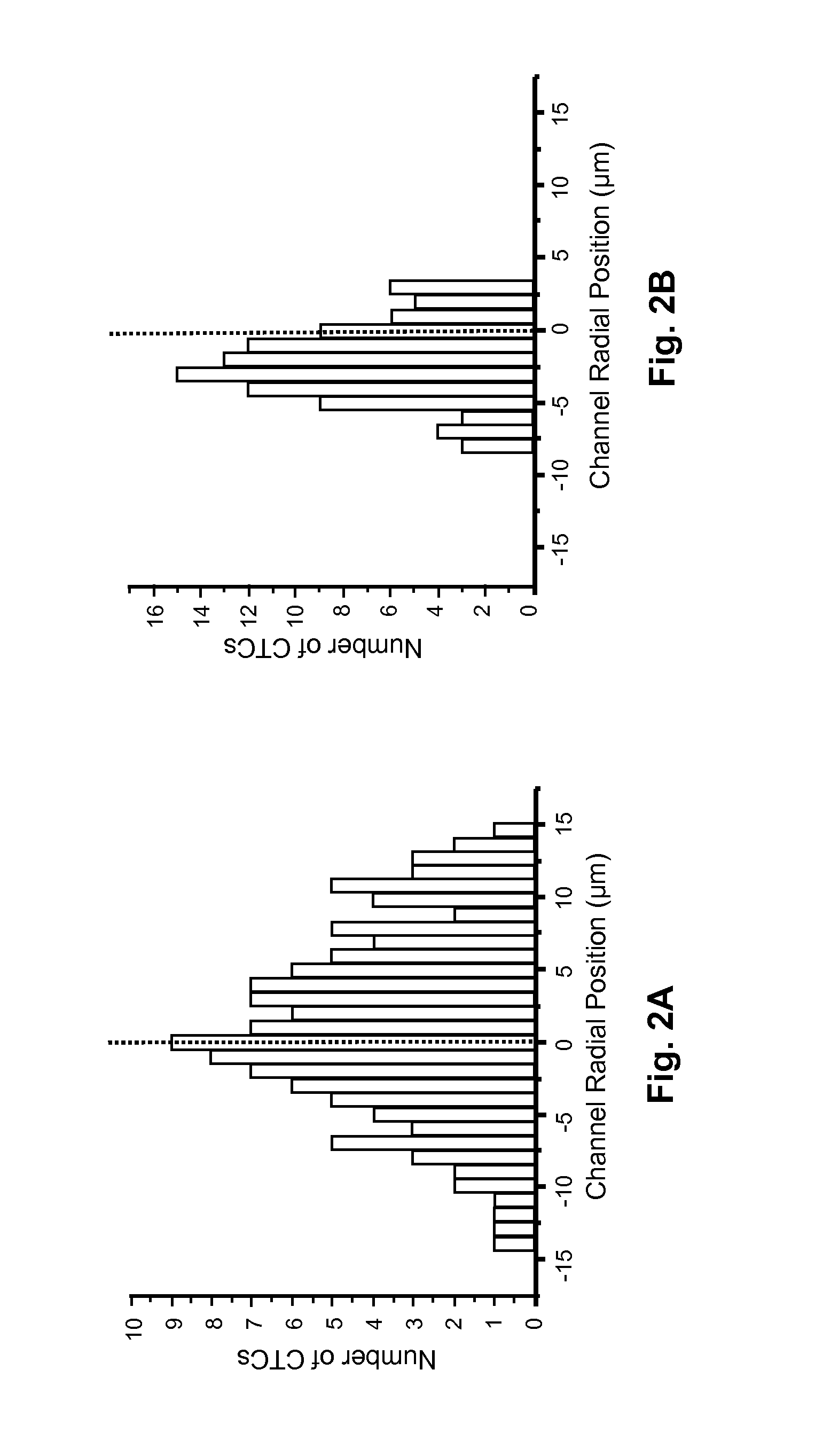Microfluidic Isolation of Tumor Cells or Other Rare Cells from Whole Blood or Other Liquids
a microfluidic and tumor cell technology, applied in the field of tumor cell or other rare cell isolation from whole blood or other liquids, can solve the problem of side walls being exposed to ultraviolet radiation
- Summary
- Abstract
- Description
- Claims
- Application Information
AI Technical Summary
Benefits of technology
Problems solved by technology
Method used
Image
Examples
examples 1-21
Fabrication of Prototype HTMSU, and Isolation and Detection of Low Abundance MCF-7 Breast Cancer Cells in Whole Blood
Materials and Methods
example 1
HTMSU Fabrication
[0029]FIG. 1 depicts schematically a prototype HTMSU in accordance with the present invention. The prototype HTMSU has been successfully fabricated and tested. The prototype device contained 51 high-aspect-ratio, sinusoidal, parallel channels that shared a common input port and a common output port. Devices were replicated from a master mold using hot embossing techniques that are otherwise known in the art. See A. Adams et al., “Highly efficient circulating tumor cell isolation from whole blood and label-free enumeration using polymer-based microfluidics with an integrated conductivity sensor,”J. Am. Chem. Soc., vol. 130, pp. 8633-8641 (2008), and the supporting material that is available at pubs.acs.org for additional details concerning the fabrication of the master mold and the micro-replication procedures, the complete disclosures of which are incorporated by reference. The substrate used in the prototype HTMSU was poly(methyl methacrylate) (PMMA), which was cho...
example 2
Antibody Immobilization
[0030]Antibodies were immobilized in a two-step process. First, the UV-surface-modified HTMSU device was loaded with a solution containing 4.0 mg / mL of 1-ethyl-3-[3-dimethylaminopropyl]carbodiimide hydrochloride (EDC), 6.0 mg / mL of N-hydroxysuccinimide (NHS) in 150 mM 2-(4-morpholino)-ethane sulfonic acid at pH=6 (MES, Fisher Biotech, Fair Lawn, N.J.); and buffered saline (Sigma-Aldrich, St. Louis, Mo.) for 1.0 hr to form a succinimidyl ester intermediate. The EDC / NHS solution within the device was then hydrodynamically replaced with a 1.0 mg / mL solution of monoclonal anti-EpCAM antibody (R&D Systems Inc., Minneapolis, Minn.) in 150 mM PBS at pH=7.4 (Sigma-Aldrich, St Louis, Mo.), which was allowed to react for 4 hours. The device was then rinsed with a solution of PBS (pH=7.4) to remove any unbound anti-EpCAM antibodies. For additional details concerning these procedures, see the Adams et al. Supporting Information (2008), hereby incorporated by reference.
PUM
| Property | Measurement | Unit |
|---|---|---|
| Speed | aaaaa | aaaaa |
| Electrical conductivity | aaaaa | aaaaa |
| Flow rate | aaaaa | aaaaa |
Abstract
Description
Claims
Application Information
 Login to View More
Login to View More - R&D
- Intellectual Property
- Life Sciences
- Materials
- Tech Scout
- Unparalleled Data Quality
- Higher Quality Content
- 60% Fewer Hallucinations
Browse by: Latest US Patents, China's latest patents, Technical Efficacy Thesaurus, Application Domain, Technology Topic, Popular Technical Reports.
© 2025 PatSnap. All rights reserved.Legal|Privacy policy|Modern Slavery Act Transparency Statement|Sitemap|About US| Contact US: help@patsnap.com



